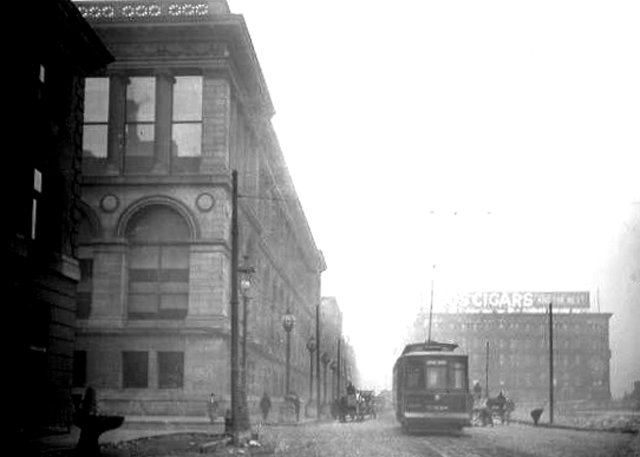November 20, 1907 – The president of
the South Parks Commission, Henry G. Foreman, proposes a set of plans that will
move the city closer to becoming the “Paris of America.” [Chicago Daily Tribune, November 21, 1907] The huge plan involves
widening Michigan Avenue north of Twelfth Street to seventy feet with a space for
plants and flowers and trees 16 feet wide on the east side of the street. “Huge vases or urns filled with brilliant
flowers or green vines places at intervals along the curb – that is the dream
of Mr. Foreman which has a good chance of becoming a quick reality ...” reports
the paper. Jackson Boulevard would also
be improved with additional lighting, floral displays, and the removal of
canopies and signs on the street. Foreman says, “These boulevards downtown should
be boulevards in something beside the name.
I feel sure that a small expenditure for improvements of such character
as I have suggested would transform Michigan avenue and Jackson boulevard from
their present appearance of ordinary city streets, and the change would be most
welcome to all the people.” The grainy photo above from the Chicago Daily News archives, taken in 1908, looks north from Washington Boulevard and shows that Michigan Avenue could probably have stood some improvement at the time.
November 20, 1942 – Fire Commissioner Michael J. Corrigan blames the lack of water hydrants for complicating the extinguishing of a massive fire at the 82-acre Chrysler B-29 engine plant under construction on a site bordered by Cicero Avenue and Pulaski Road on the east and west and Seventy-First and Seventy-Seventh Streets on the north and south. The power plant for the facility is destroyed before the flames can be brought under control in a 3-11 alarm fire that forces fire fighters to run hose lines for more than a mile along Cicero Avenue. Ground was broken for the massive plant in June of 1942 with construction following designs by architect Albert Khan, plans that used half the steel that conventional plants of similar types had used. By March of 1943, despite the fire, “16 buildings at the complex had come on line. The complex ultimately used 4.3 million bricks, housed over 6,000 machine tools, had 23 cafeterias for thousands of employees, was able to handle 10 million gallons of water a day . . . Over 16,000 were employed in building the plant; and 1,200 Chrysler personnel were involved in planning and layout of the manufacturing.” [www.allpar.com] Today as you pass by the headquarters for Tootsie Roll Industries and the Ford City shopping mall on Cicero Avenue, you are looking at a site that once turned out 18,413 engines for 3,628 B-29 airplanes.







No comments:
Post a Comment